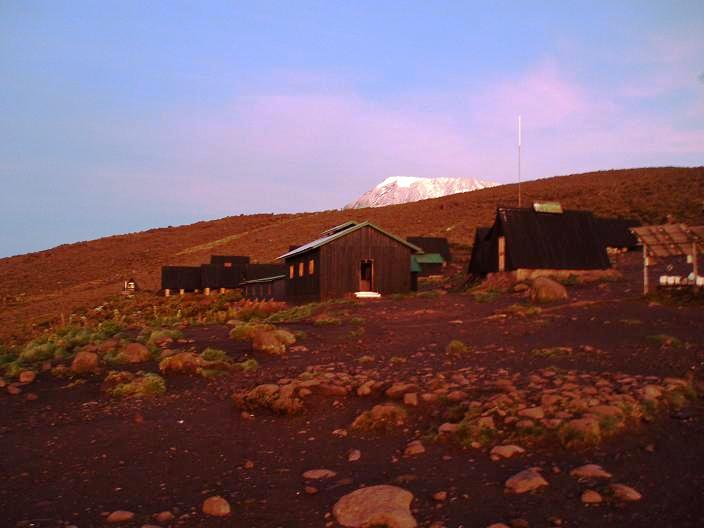Golden promise
The icy stillness of the night was punctured by the proprietorial cawing of the crows.
They flapped about in the frigid air or fluffed their feathers on whatever perch they could find, noisily rebuking each other, their eyes darting about like vigilantes guarding who knows what.
It was still dark in the hut but I had not been sleeping deeply; climbers who have not yet fully acclimatised rarely do. What’s more, I was dosed up on Diamox, an altitude sickness prophylaxis. I had never before used altitude medication and had quickly discovered an inconvenient side effect:
Diamox works by conscripting the kidneys to help remove carbon dioxide from the blood. I would have to plunge into a troubling labyrinth of bio-chemical equations to explain how it does this and I doubt that I could do so either clearly or accurately, so I’ll stick to a simple, personal observation: Diamox makes you pee a lot.
This was an unwelcome experience, and not just because of the inconvenience. Having only recently accepted that I am being sucked inexorably into the indeterminate infirmities of middle age, those nights of innumerable, pharmaceutically-induced toilet trips were a troubling glimpse of what old age might have in store…
If I had merely had to push aside a duvet and shuffle a few short, bare-footed paces to a sparklingly hygienic bathroom then, on the spectrum of difficulties, the Diamox predicament would have been at the ‘trifling inconvenience’ end of the scale. But that was not the case. Each premature refilling of my bladder required me to extricate myself from a tightly drawn sleeping bag, don boots and waterproofs and then stumble uphill through icy blackness over uneven ground to a plank-floored shed where a hole opened to a deep pit harbouring a pungent swamp of, well, let's just call it undigestible fibre.
On the bright side, all that slowly composting material kept the toilet huts a few degrees warmer than the chilly outdoors making the experience slightly more tolerable if not exactly desirable. But it always seemed that just as soon as I was snug in my sleeping bag once more, I needed to go again.
Others in the hut were suffering the same affliction and as yet another pair of boots began their clomping trip to the latrines, I noticed that the narrow, oblong window at the end of the line of bunks had taken on a weak, grey hue as the darkness softened.
My alarm had not yet sounded but I swung my legs over the side of my bed and pulled on my fleece and rain jacket. I’m a night owl and will seldom rise before it becomes urgently necessary to do so, but dawn at Horombo is a moment of golden promise that is not to be missed.
Outside, I sucked in the clear, icy air. Whilst the A-frame huts still brooded in the chilly pre-dawn gloom, I watched the sky dissolve from black, to velvet, to deep blue. Far below, a sea of low-altitude cloud washed against Kilimanjaro’s lower slopes; it was a murky pea soup just then but I knew that it would soon transform into an ocean of fluffy cotton-wool. Before that, Kibo and Mawenzi were illuminated to dazzling effect, catching the sun’s first rays whilst the sky behind them still retained the last colours of night.
One moment dawn was no more than a turquoise fringe on the eastern horizon, marking the boundary between the darkness that has almost gone and the new day about to come. But the frontier pushed quickly upwards, making way for bands of yellow, orange then red. Then, with a swiftness that compresses twilight into a few hurried minutes, the sun soared into sight. Slowly, the cold retreated and by the time I had finished breakfast the sun was warm, although the air was still crisp and fresh.Shouldering my pack I headed into the alpine desert, the mountain’s third distinct climatic zone, leaving the crows still arguing over who knows what.
.<<BACK INDEX NEXT >>.
If you are enjoying reading, please share this page with your friends and followers:
Dawn viewed from Horombo huts: the first light of day (above) and the early morning light on Kibo (below)

Mawenzi's rugged profile in the early morning.
Recommended reading
Trekking Guide to East Africa
Years ago the first edition of this Lonely Planet title just leapt off the bookshop display: Africa and mountains - the sleeve just conjured up so many exotic possibilities that I had to own it.
Kilimanjaro National Park Map
Forget T-shirts; for me it's "Been there, got the map." I can relive a holiday or climb, or go on a brand new fanciful adventure, just by poring over a map. This one includes useful street layouts for Moshi and Arusha, and is GPS approved, whatever that may mean!For a larger scale, try these maps from ITMB (1:62500) and Rotter Verlag (1:50000)
Kiilimanjaro the trekking guide to Africa's Highest Mountain: Includes Mount Meru & guides to Arusha, Moshi, Marangu, Nairobi & Dar-Es-Salaam
"Stedman is something of a Kili obsessive... and that shows on every page of this fully revised and expanded edition of his guide..." Trek & Mountain, March 2010
"A comprehensive and informative guide." Wanderlust magazine, February 2011
Swahili (Lonely Planet Phrasebook)
Portable, pocket-size and cheap, but packed full of useful phrases. Swahili is an uncomplicated language and Tanzanians are patient with beginners. Believe me, a few Swahili words go a long way.